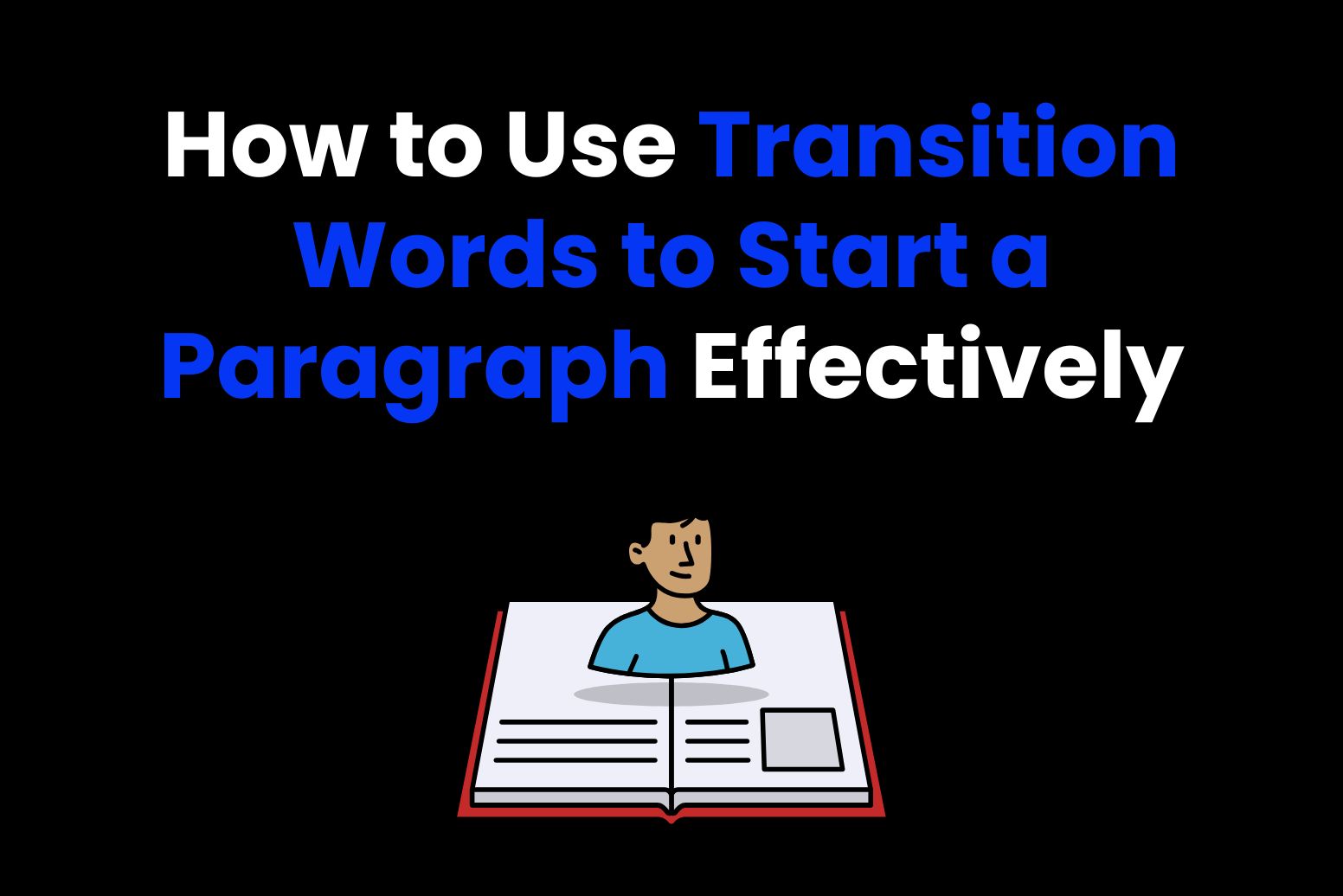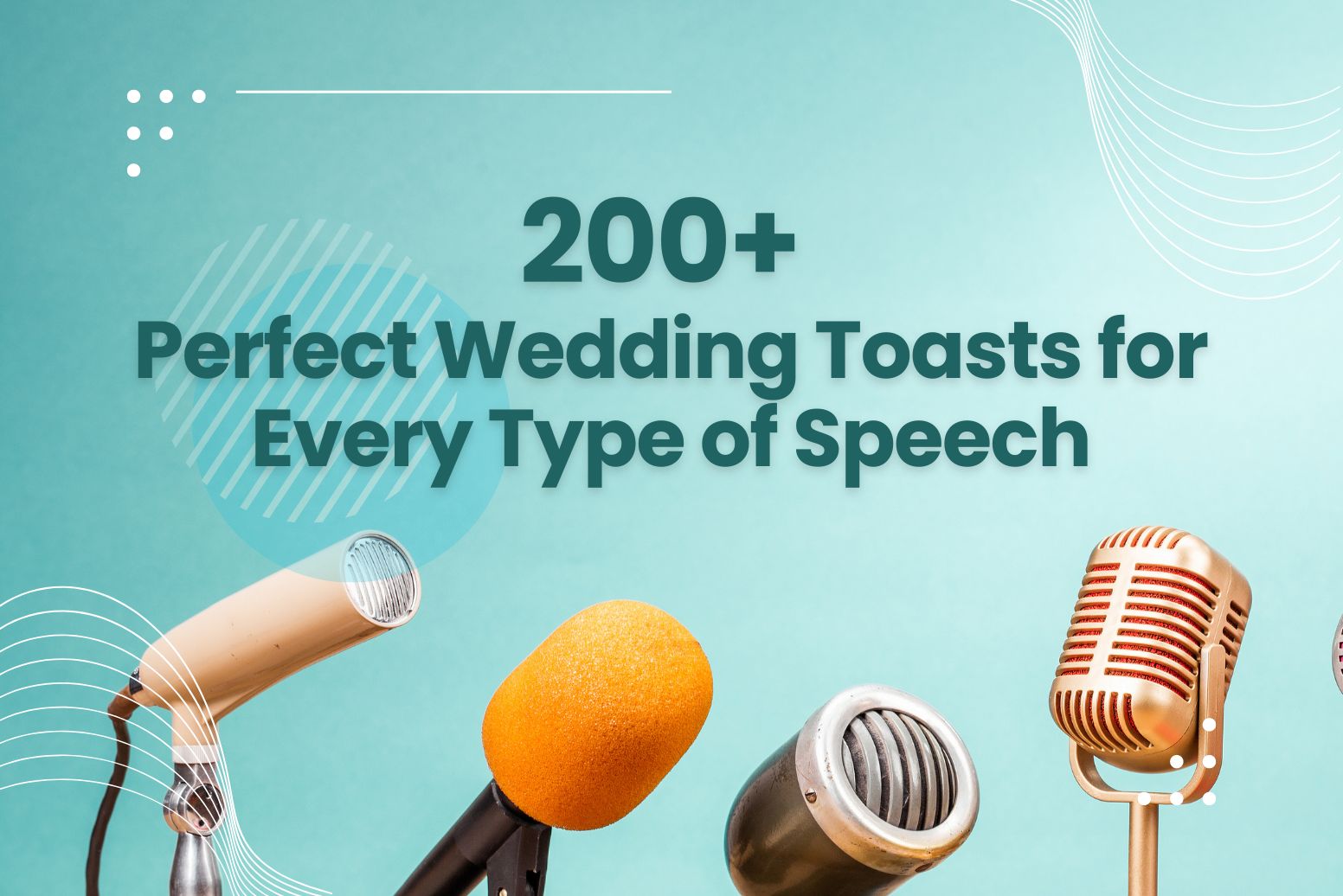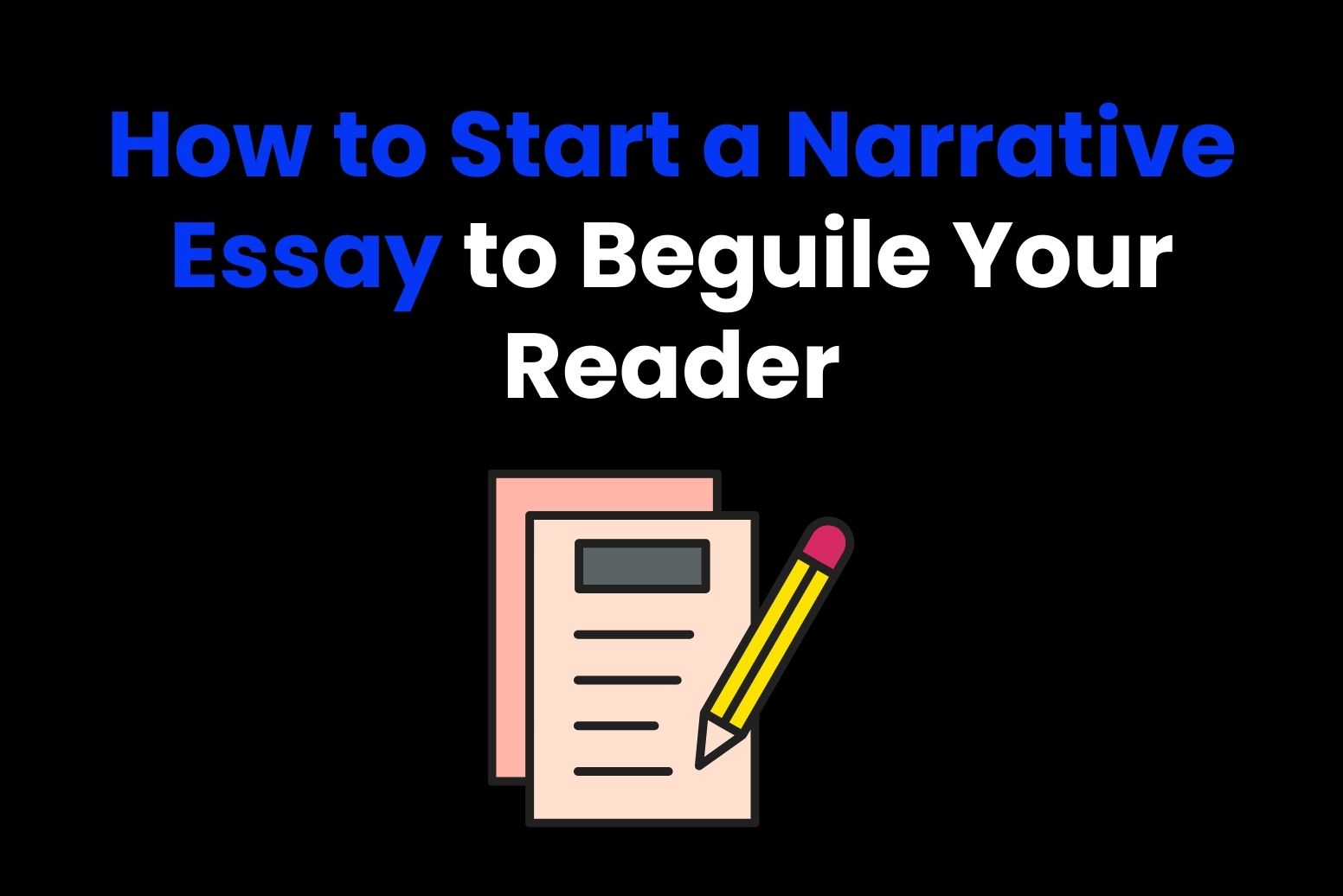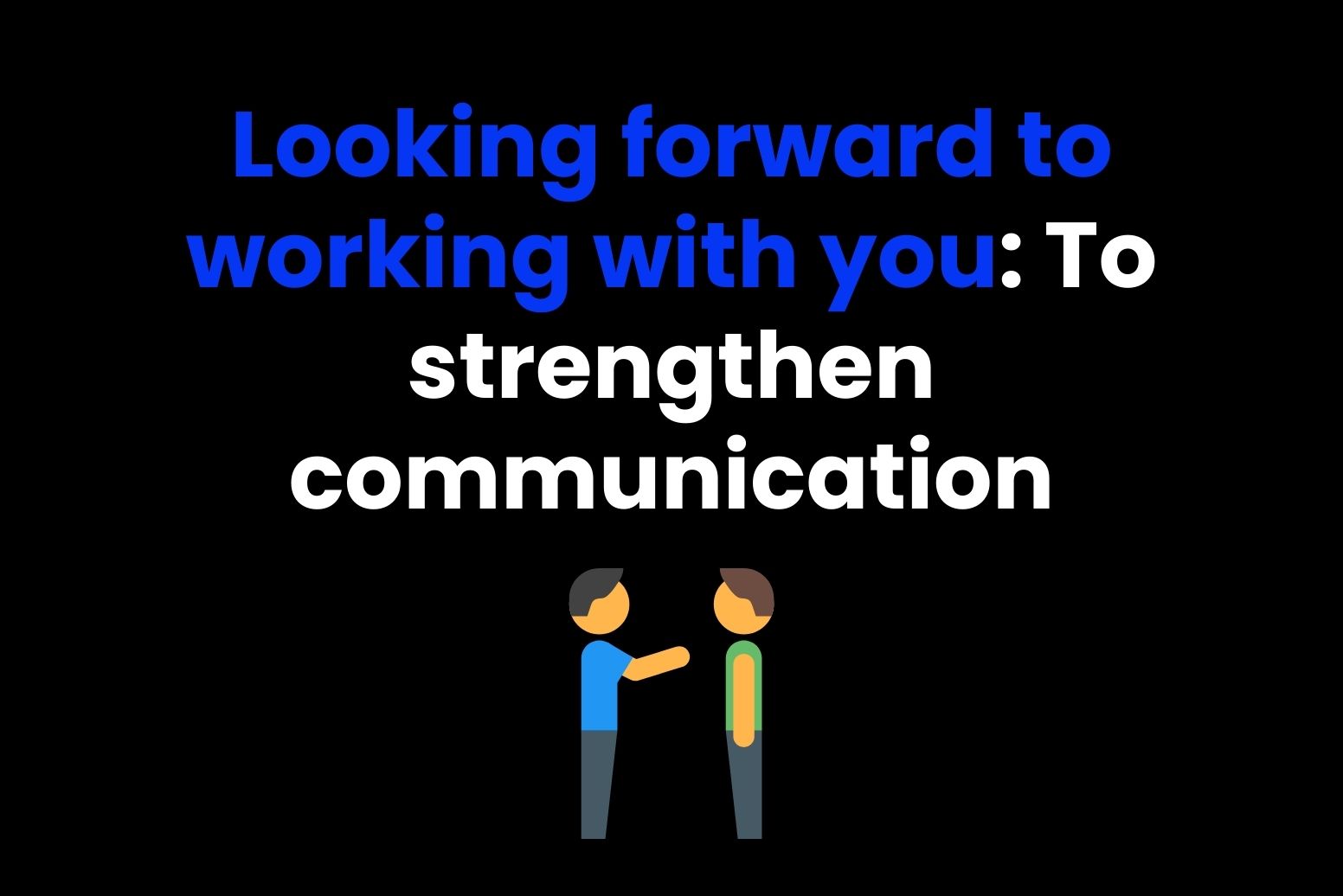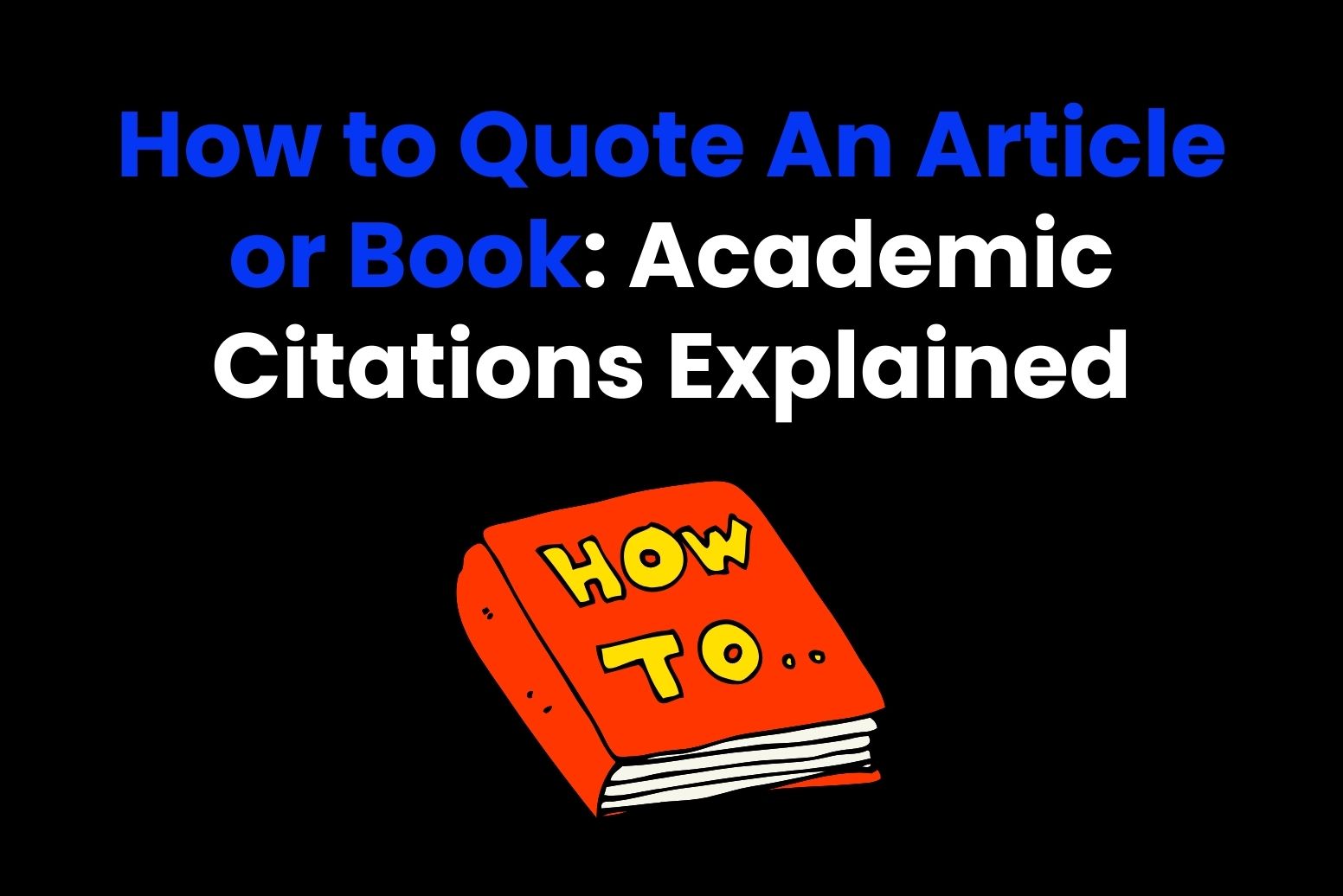Are you a writer and you wish to get better reader engagement and content flow? Writing is an art and you need to be a great artist to keep the reader hooked. Knowing how to use transition words to start a paragraph well is key to having your writing flow naturally.
Transition words are the strongest tools to overcome the hard reading flow by connecting words and ideas. There are many transition words but the question arises of how to use these bridges effectively to get the most out of it.
This blog post is all about what transition words are, why they are important, their types, and how you can use them effectively. We will walk you through a list of transition words you can use in your essay. So without further ado let’s get into it:
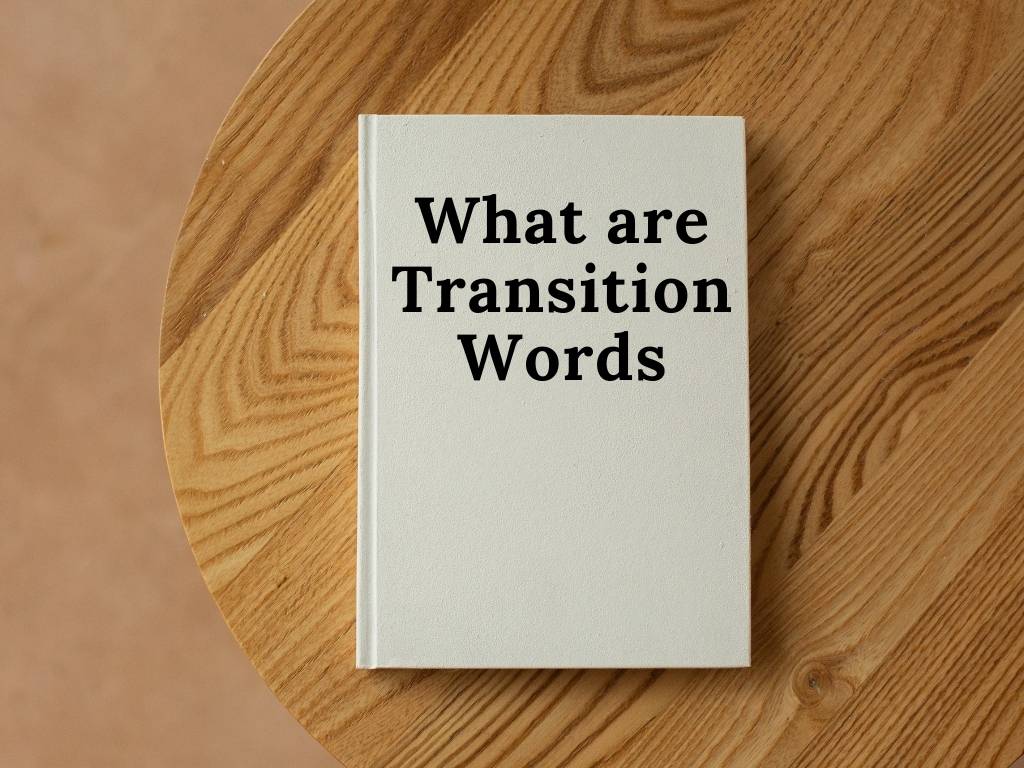
What are Transition Words?
Before mastering the art of effectively using transition words to start a paragraph let’s have a look at what transition words are. Transition words are additional phrases offering room for new ideas by linking words and keeping the argument alive. These linking words help you create logical flow by breaking long sentences short using words like “and” “or” “additionally” “moreover” and so on.
To put it another way, transition words serve as the writing glue that keeps your essay and paragraph relevant organically. When you effectively use transition words to start a paragraph all the pieces fit together like a puzzle.
For Example:
Here are few sentences with right placement of transition words so that you may better pull the reader in and keep their attention
- Firstly, I need to finish my work.
- Since its raining outside, we can not go out for coffee today
- She missed the deadline; as a result, her project was rejected.
- He enjoys outdoor sports; for instance, hiking and mountain biking.
Why Should I Use Transition Words To Start a Paragraph?
Apparently, these unsung heroes’ names’ “transition words” look small but they have great importance in writing. They act as bridges to connect your ideas making your article logical, clear, and easy to follow. Hence boosting content engagement.
Have you ever read an essay that feels broken into pieces with no paragraph connecting with the previous one? It happens when the writer doesn’t use transition words. The essay lacks proper use of transition words is frustrating for the reader. In turn, the reader prefers moving on to the next essay rather than wasting energy on that disjointed content.
To keep the point clear in an article or blog post these bridges add structure and coherence. Making it reader-friendly and creating logical connections among sentences, these subtle cues work like magic if used wisely. Not only does it elevate your writing style but polishes your content making it look more professional. Hence, these secret weapons may look small but hold great importance.
Here is an example:
Here we have provided two same paragraphs, one with transition words to start a paragraph and the other without it. You can clearly see how the addition of transition words has boosted readability.
Paragraph Without Transition Words:
Protecting the planet starts with making mindful choices. A healthy eating habit and lifestyle are key to a clean and green environment. Putting a stop to deforestation and excessive burning of trees helps minimize pollution. Water and land animals benefit from better ecological systems.
Paragraph With Transition Words:
Protecting the planet starts with making mindful choices. Furthermore, a healthy eating habit and lifestyle are key to a clean and green environment. For instance, putting a stop to deforestation and excessive burning of trees helps minimize pollution. As a result, water and land animals benefit from better ecological systems.
Although both paragraphs provide the same information, the second one is coherent, and clear and employs transition words to link concepts more easily. Unlike the first paragraph second one with transition words creates a natural link between two sentences by keeping the reading flow alive.

After reviewing these above-mentioned examples you have got an answer to your question: “why should I use transition words to start a paragraph?”
Types of Transition Words
There are 200+ transition words in English grammar but they don’t serve the same purpose. To make good use of these linking words, you need to be mindful of their meaning and use. Here we have divided all the transition words into 8 different categories to help you understand the difference better:
1. Transition words for Agreement, Similarity, and Addition
| Correspondingly | Not only … but also | Similarly | first/second/third |
| Uniquely | firstly/secondly/thirdly | not to mention | Moreover |
| as well as | Likewise | additionally | Furthermore |
Above mentioned table indicated a few examples of transition words you can use when showing agreement, reference, or addition in your content. These transition words help explain complex ideas and introduce new information.
For example:
- James is a part of the basketball squad for the current semester. Additionally, he plays soccer.
- Firstly take a pan full of water. Secondly, put the pan on the stove
- Chris is not only intelligent but also very humble and caring.
2. Transition words for Disagreement, Restriction, or Opposition
| But | rather | Even though | After all |
| conversely | Besides | while | Yet |
| whereas | otherwise | nonetheless | However |
Using such transition words is crucial for grasping the reader’s attention when you have a different perspective without alerting them.
For example:
- Be ready on time, otherwise we will miss the show.
- Besides being a good writer, she is an unmatchable singer too
- Natasha is rich yet she is so down to earth
3. Transition words for Condition, Purpose, Cause, and Effect
| In the event that | In order to | Due to | While |
| Because of | Given that | lest | Since |
| unless | As long as | In view of | Even if |
The use of words like “since” and because of” is helpful in better understanding the purpose of the initial part of the sentence. A writer can better convey his motivations for doing something to readers with appropriate use of Cause/Condition/Purpose transition words to start a paragraph.
For example:
- Since it’s your big day, you have the right to enjoy it to the fullest
- Haris was late to the party because of the traffic
- The phone rang while I was in the kitchen.
4. Transition Words that Show Support, Emphasis, and Example
| in other words | to put it another way | as an illustration | first thing to remember: |
| surprisingly | Frequently | significantly | Particularly |
| especially | Specifically | Notably | Indeed |
These transition words are much more than just a minor shift in tone or idea. You can use transition words like “especially”, “specifically”, “notably” to putting emphasis on a strong opinion.
For example:
- Sherry dislikes spending money excessively, in other words, he is so sensible.
- To put it another way, I don’t really appreciate your idea.
- There are several possibilities to think about, notably the economical one.
5. Transition Words that Show Results and Consequence
| as a result | in that case | Thus | Therefore |
| under those circumstances | In such a case | Hence | Consequently |
| Therein | Thereupon | Forthwith | Accordingly |
These transition words are used to emphasize the results in the same sentence without exaggerating the situation. In below below-mentioned example, you can see the effect of earlier action on the upcoming conclusion.
For example:
- Pizza is now more expensive, therefore I will bake it at home from now onwards.
- They reduced the price of pizza again as a result the selling percentage increased by 10 percent.
- Alia was good at cooking, hence she won the competition.
6. Transition Words for Conclusion
| On the whole | Ultimately | Obviously | Ultimately |
| In summary | In conclusion | In short | In a nutshell |
| To sum up | As shown above | Speaking generally | In brief |
Concluding transition words are an excellent strategy to keep the reader’s attention alive while presenting your idea effortlessly. In the below-mentioned example, you can see how we have presented the bigger picture and shaped the idea using one word.
For example:
- To sum up, we need to improve our marketing strategy to get better outcomes.
- In short, it is all about the hard work we put in.
- We are here to bring in good suggestions. Ultimately the final decision is all yours.
7. Transition Words for Time, Sequence, and Chronology
| in due time | in the meantime | Meanwhile | Since |
| as soon as | as long as | Prior to | Until |
| at the same time | Immediately | Shortly | Last |
If you want to put a time mark on your words, make assumptions, or ring up the past, you may use time transitional phrases.
Mentioned examples below are great representations of how small transition words do a fantastic job of speaking of the time of work happening in the past, present, or future.
For example:
- We need to finalize both the menu and venue prior to the wedding day
- I will send you the final editing shortly
- Chris was keeping an eye on event management meanwhile, the singer setting up the mic.
8. Transition Words to Indicate Location and Spatial Relationships
| In the middle | In front of | On this site | Here |
| Behind | Between | Nearby | Wherever |
| Down | Below | Beneath | across |
The above table shows the correct use of transition words to indicate any location or space.
For example:
- The petrol station is over there
- The ferrous wheel is located in the middle of the park
- You can park your car in front of my home
In the second example, the location of the park is clearly understandable with the help of appropriate transition words.
Do you ever find yourself struggling to make your writing flow smoothly or searching for the perfect words to connect your ideas? If yes then Arvin AI will save your day. It offers a writing improver to help you get a vast selection of transition words for polishing your content.
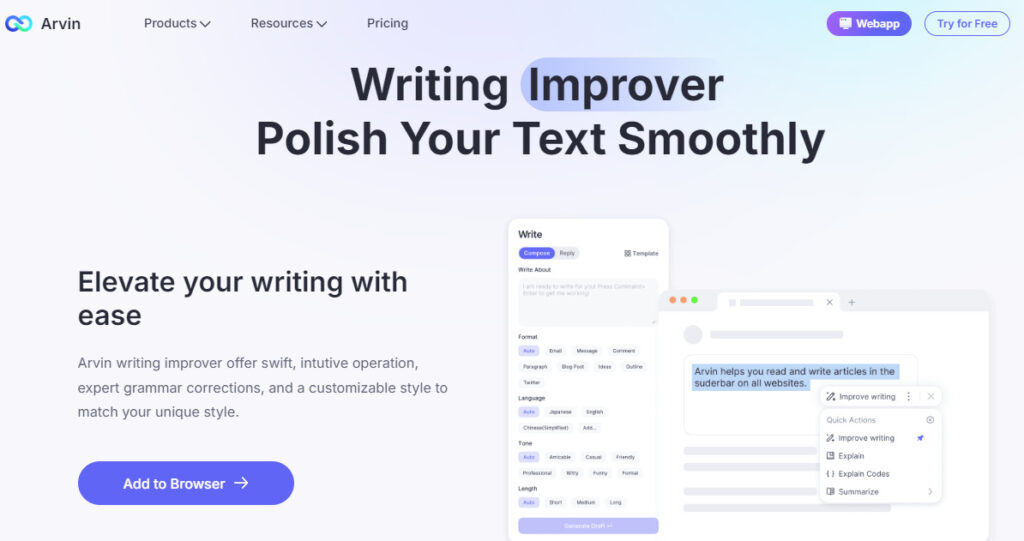
How To Use Transition Words in Paragraphs – Tips to Follow
By now we know how transition words work in linking ideas and creating coherent paragraphs. However, it’s not necessary to place transition words at the start of the paragraph. These linking words can be placed anywhere in a phrase depending on the structure of the sentence.
Additionally, there are transitional words that are visually identical but hold different meanings If not used correctly, it will alter the meaning of the sentence. This implies that it is not that easy to play with transition words.
To make your writing less challenging we have complied tips to help you:
1. Do not overuse Transition words:
Avoid using transition words excessively, even if it improves the overall structure of your work. Some writers use transition words excessively, which may make their work seem robotic and jerky.
2. Choose Appropriate Transition Words:
Keeping your intended aim in mind is important while choosing transition words. Inappropriate placement or poorly chosen language might make your content less reader-friendly.
3. Stay Consistent:
Consistency is the key to keeping the readers engaged. Consistent use of phrases will maintain a smooth and logical flow.
4. Don’t Use it Out of Context:
Make sure to use transition words strategically throughout your blog post. When backing up an argument, concluding an essay, presenting a new thought, or linking two related ideas are all good places to use them.
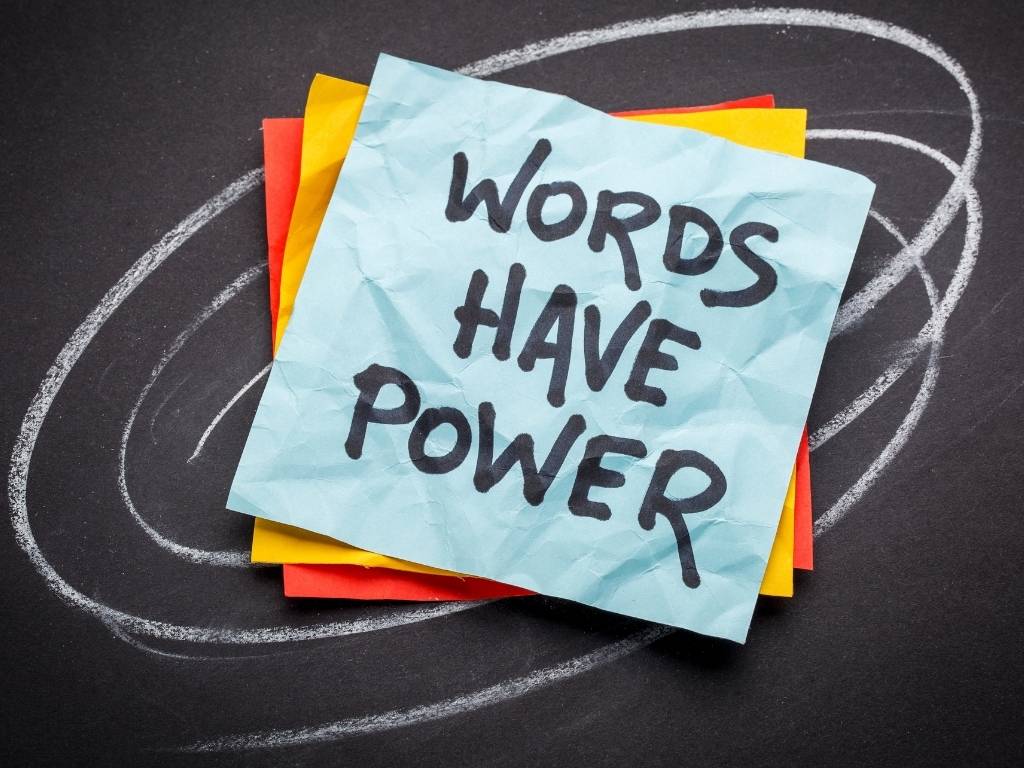
Still Unsure? Take Arvin AI Help
Undoubtedly this guide has helped you a lot in using transition words to start a paragraph. However, if you still want a list of transition words to start a paragraph and take your article to the next level then Arvin AI is here to save your day.
Arvin AI is an extension browser offering tons of functions mainly content generation, reading, image generation, and whatnot. Powered by GPT-4, this Chabot sparks creativity and allows you to chat on any browser online. The user-friendly interface allows you to optimize, rewrite, and correct errors in turn boosting your productivity.
Here is a step-by-step guide on how to assist this Chabot to get writing results of your choice. It will help you choose appropriate transition words to start a paragraph.
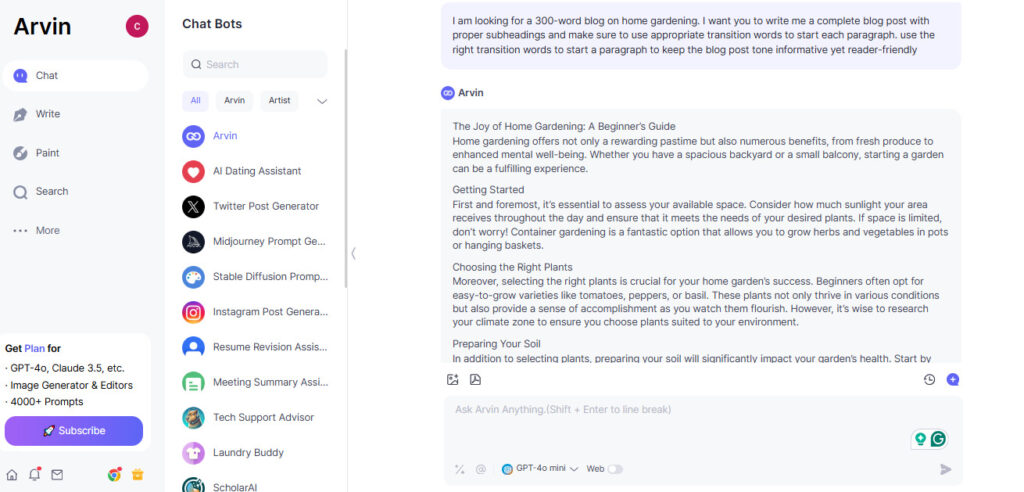
You can ask Arvin AI to not overuse transition words. As you can in the above example, with a single prompt I got a complete blog post with the exact placement of transition words.
Frequently Asked Questions:
Here are the frequently asked questions about transition words to start a paragraph:
Why are transition words important for SEO?
As we know content readability is the key factor of good SEO and transition words play a crucial role in boosting readability and grabbing reader attention. Not to mention how these magical bridges shape your writing and connect ideas. Also, well-structured text attracts readers and helps with search engine optimization!
How to transition smoothly from one topic to another?
The following transition words help you move smoothly from one related subject to another:
- With this in mind
- On the subject of
- Regarding
- Considering
Is it appropriate to use transition words in formal writing?
Yes, you can use transition words in formal writing as it improves content flow while promoting coherence making the writing look professional and polished.
Conclusion – Final Words
As of now, you have a better understanding of how to use transition words to start a paragraph and enhance your article, essay, or any formal email. These small words link ideas by demonstrating relationships between different concepts. Providing structure and smooth flow, these connecting phrases enhance your essay. Still concerned that your essay might need the correct placement of transition words and proofreading? If yes then you should leave it to Arvin AI’s grammar checkers. With its premium quality services, you can proofread it and get the best transition word suggestion to meet your reader’s expectations.



